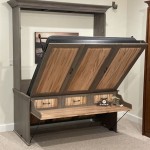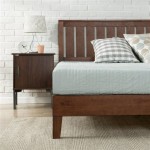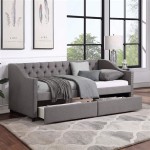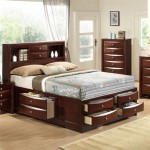Maximum Age For Bunk Beds: A Guide for Parents
Bunk beds are a popular choice for families with multiple children, offering a space-saving solution and adding a fun element to the bedroom. However, the question of maximum age for bunk beds often arises, leading to concerns about safety and suitability. While there's no universally accepted age limit, there are several factors to consider when determining if bunk beds are appropriate for your child.
Safety Considerations
The primary concern regarding bunk beds and older children revolves around safety. Bunk beds, especially those with ladder access, present inherent risks, particularly for children who may be less coordinated or prone to clumsiness. As children mature, they develop greater independence and mobility, increasing the likelihood of falls or injuries. It's crucial to assess the specific risks associated with your child's age and developmental stage.
Another safety factor to consider is the construction and stability of the bunk bed itself. Older models or poorly constructed bunk beds may not meet current safety standards, posing a greater risk of collapse or instability. Regular inspections for wear and tear, including checking for loose screws, wobbly ladders, and damaged railings, are essential to ensure safety.
Developmental Considerations
Apart from safety, developmental factors also play a role in determining the suitability of bunk beds for older children. As children grow, their needs and preferences evolve. Older children may prefer more personal space and privacy, which bunk beds might not provide. They may also develop heightened social needs and require more personal space to engage in activities like reading, studying, or spending time with friends. It's essential to consider these developmental changes and how they might affect your child's experience with a bunk bed.
Additionally, older children may be more prone to arguing or competing for space in a bunk bed, leading to potential conflicts. This can be especially challenging if the bunk bed is shared with siblings who have vastly different personalities or sleep schedules. In such scenarios, it might be more appropriate to transition to separate beds or consider alternative sleeping arrangements.
Alternative Sleeping Arrangements
If you're unsure whether a bunk bed remains suitable for your older child, exploring alternative sleeping arrangements might be beneficial. This could involve transitioning to twin beds, loft beds, or even separate rooms, depending on your home's layout and your child's preferences. Loft beds offer a unique combination of functionality and space, providing a sleeping area above a desk or play area.
Ultimately, the decision of when to transition away from bunk beds should be based on a combination of safety, developmental, and practical considerations. Open communication with your child, considering their needs and preferences, and carefully assessing the risks and benefits of different sleeping arrangements can help you make an informed decision that prioritizes both safety and well-being.

Faqs On Ages For Bunk Beds Custom Kids Furniture

The Appropriate Age For Bunk Beds A Comprehensive Guide Cuckooland

The Appropriate Age For Bunk Beds A Comprehensive Guide Cuckooland

What Age Is Safe For Bunk Beds Bamfo

High Vs Low Bunk Beds Which Bed Is Best For Kids Max And Lily

Kids Bunk Bed Safety Room To Grow

The Appropriate Age For Bunk Beds A Comprehensive Guide Cuckooland

The Ultimate Bunk Bed Guide Cuckooland

Bunk Bed Weight Limit What You Need To Know Clafbebe

Are Bunk Beds Dangerous
Related Posts







